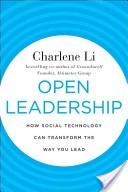The ultimate unlecture on (geo) business models

Six books
Not all knowledge comes from books, but some wisdom certainly does. I took pictures from the few books I brought with me and discussed some of the models presented: Inside the tornado (G. Moore; zooming into the bowling alley, E. Rogers and the relationship to Treacy / Wiersema), Strategy Maps (Kaplan/Norton; mentioning the KPI’s, strategy maps, value chain), Blue Ocean Strategies (Kim/Mauborgne; value innovation, red oceans vs blue oceans, forgot to mention the focus, divergence and a compelling tagline), Free (Anderson; explained the free economy a bit, mentioned the long tail), Open Leadership (Li; how organizations can take advantage of the age of openness) and The Halo Effect (Rosenzweig, must read when you are into management science or a believer of management book hypes). I did bring Porter as well, but thought it was a bit of an insult to discuss his work in five minutes or so.
Five models
Thought it would be relevant to at least know about the following concepts: value chain / five forces (Porter), strategy schools (Minzberg), balanced scorecards (Kaplan / Norton), open innovation (Chesbrough). I did draw these models on the board and found out that working with an iPad with chalk on your fingers is extremely difficult.
Four (random) recommendations
In no particular order, but maybe useful, to students as well. (1) dive into the topic of innovation. Be able to explain what that is all about, in your own words. (2) read The Future of Management by Hamel. (3) try out the business model canvas by Osterwalder (it is a bit Kaplandianden to me, but nevertheless a good start if you want to think in business models). (4) get on LinkedIn and get connected.
Good questions from the students (beforehand as well); I tried to react to those as much as possible (and shared a bit of Esri internal insight as well, related to practical use and startups). I replied to a “I don’t think we know much about the topic yet” with “I don’t think we do either. We just aim to help our current and future users as much as we can (and plan to have a good time with them while achieving that). “ Next time I will have a proper presentation in place!
